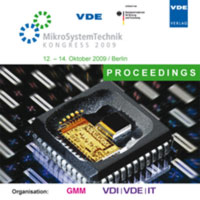Microreaction Platform for Educational Experiments, Flexible Synthesis and Device Characterization
Konferenz: MikroSystemTechnik - KONGRESS 2009
12.10.2009 - 14.10.2009 in Berlin, Germany
Tagungsband: MikroSystemTechnik
Seiten: 4Sprache: EnglischTyp: PDF
Persönliche VDE-Mitglieder erhalten auf diesen Artikel 10% Rabatt
Autoren:
Groß, G. A.; Günther, P. M.; Schneider, S.; Köhler, J. M. (Institute for Micro- and Nanotechnologies, Ilmenau University of Technology, Weimarerstr. 32, 98693 Ilmenau, Germany)
Inhalt:
Here we present a multi-purpose micro reaction platform for education and research. Micro flow synthesis as well as device characterization experiments can be carried out. The platform enables flexible experimentation, because all parts can be reassembled easily. In this way, the platform is adaptable to the experimental demands. A magnetic mounting plate enables free positioning of the experimental devices such as pressure sensors, injection valves, flow controller or optical-fibre mounts. Electronic devices and sensors are connected to a computer controlled interface box. The interface box enables fully computer controlled experimentations. A high quality syringe pump with 4 independent channels enables pulsation free flow modes. For educational purposes a set of experiments were developed. Here, micro fluidic devices such as micro mixers or micro channels can be investigated in terms of pressure loss, residence time measurements and mixing efficiency. Simple fluidic experiments for undergraduates or even pupils can be done as well as fastidious research experiments carried out by PhD-students or senior scientists. Therefore, we tried to cope a maximal rage of physico-chemical parameters to enable experiments for a wide application range. The maximal working pressure for the system was defined to about 20 bar. We defined a usual working temperature range for reactions between -20 and 200 °C. For the procedural experiments we focused on a flow rate range from 100 muL/min up to 10 mL/min. All used components were chosen with respect to recent operation limits.


